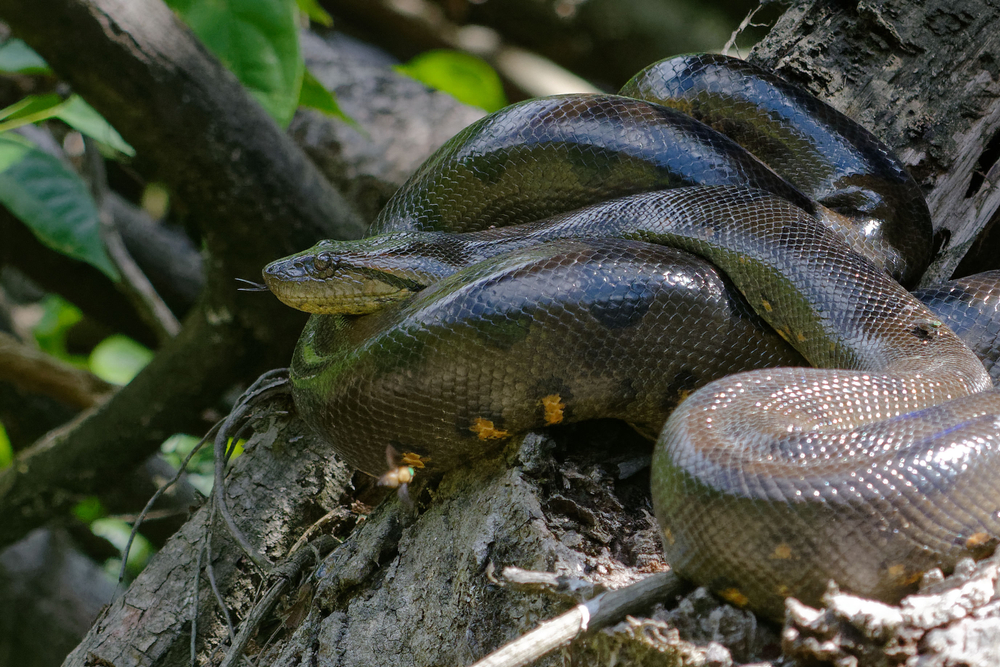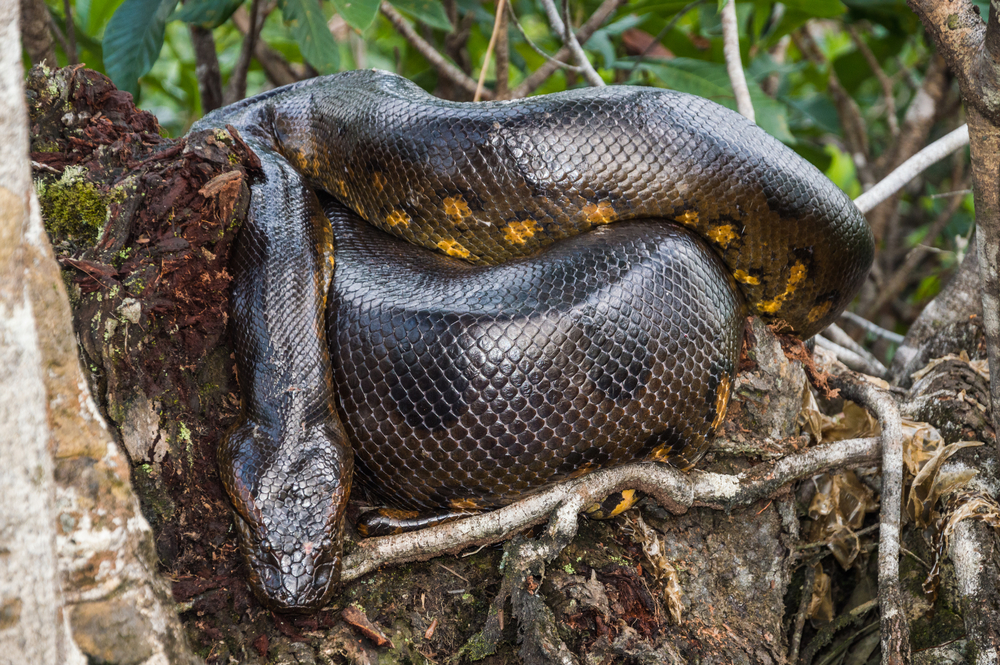Anacondas, particularly the Green Anaconda, have a reputation that often leads to the question of their danger to humans. While they are powerful and capable predators, the reality of their danger to people is nuanced:
- Human Interaction is Rare: Anacondas are native to remote areas of South America, primarily in dense rainforests, swamps, and rivers. Their natural habitat does not frequently overlap with areas densely populated by humans. As such, encounters between anacondas and humans are relatively rare.
- Non-Venomous: Anacondas are non-venomous constrictors. They kill their prey by coiling around it and applying pressure, not through venom. This method of hunting is less dangerous to humans compared to venomous snakes.
- Not Typically Aggressive: Anacondas are not typically aggressive toward humans. They tend to be more defensive than offensive, often choosing to flee or hide rather than confront a threat. Attacks on humans are exceedingly rare and often involve extenuating circumstances, such as a snake feeling cornered or threatened.
- Risk to Small Pets or Livestock: While not a direct threat to humans, large anacondas can pose a risk to small pets or livestock. They might hunt smaller domestic animals, especially in regions where their natural habitat overlaps with human settlements.
- Fear and Misunderstanding: A lot of the fear surrounding anacondas stems from myths, exaggerated stories, and a general misunderstanding of their nature. They are often portrayed as monstrous and man-eating in movies and folklore, which is far from the truth.
- Conservation Concerns: It’s important to approach the topic of anacondas with an understanding of their role in the ecosystem. They are apex predators and play a crucial role in maintaining the ecological balance.
In summary, while anacondas are certainly capable predators, they are not generally a danger to humans. Most negative perceptions are based on fear and misunderstanding rather than factual evidence of their behavior. As with any wild animal, it’s important to respect anacondas and their habitat, maintaining a safe distance if an encounter occurs.










































































